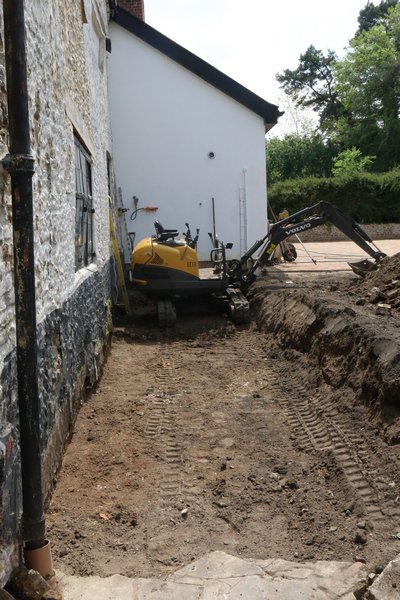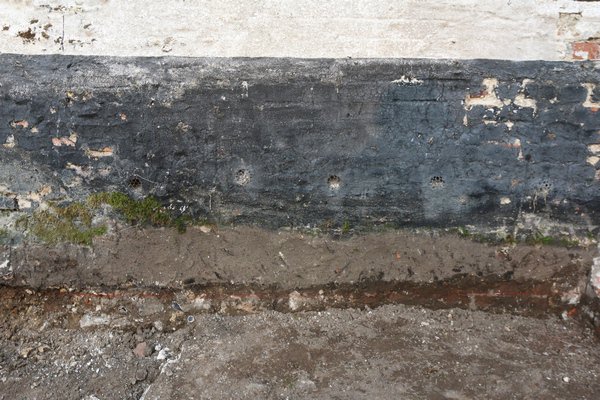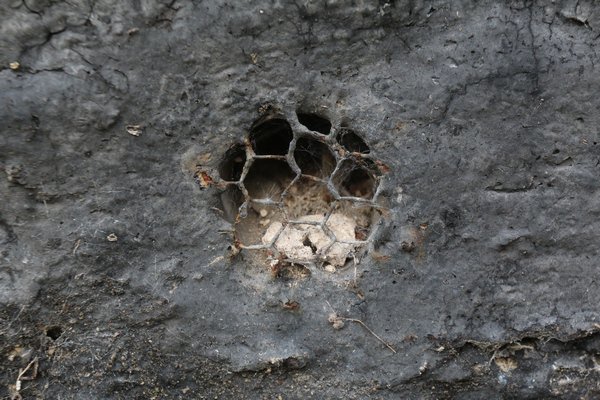Flyfisher
Member
- Messages
- 10,495
- Location
- Norfolk, UK
One of our rooms has suffered from decades (at least) of high external ground levels, which I'm finally getting around to fixing. The wall in question is part of the C17 addition to the house but I suspect the external ground level was raised when a path around the house was added at some time without bothering to do any digging. Whatever the actual history the consequences are clear.
This is the context:

The wall in question is west facing. The ground level was not quite as high as it first appears because there was a small retaining wall holding back the lawn from the path, but you can just about see the line on the wall where the ground level was before - about one foot above the internal floor level. I've now dug this down to about three inches below internal floor level.
After clearing all the undergrowth that was obscuring the wall, I noticed these peculiar features:

They are present along the entire length of the wall and were above the raised external ground level. Here's a close up view:

It looks like a round hole about two inches in diameter covered with chicken wire, presumably to prevent vermin entering the wall.
I'm guessing that the raised ground level caused the base of the wall to be damp (actually I know that for a fact, having removed the rotten skirting board!) and that these 'features' were subsequently added to the wall in an attempt to improve ventilation within the wall and, hopefully, help to dry it out - though I can't see how they could possibly have done anything about the damp in the lower part of the wall given the raised ground level.
I've never seen such features before (though that's not saying much!) and am wondering if such things were commonplace, or even if they were the period equivalent of damproofing snake oil? Any ideas?
This is the context:

The wall in question is west facing. The ground level was not quite as high as it first appears because there was a small retaining wall holding back the lawn from the path, but you can just about see the line on the wall where the ground level was before - about one foot above the internal floor level. I've now dug this down to about three inches below internal floor level.
After clearing all the undergrowth that was obscuring the wall, I noticed these peculiar features:

They are present along the entire length of the wall and were above the raised external ground level. Here's a close up view:

It looks like a round hole about two inches in diameter covered with chicken wire, presumably to prevent vermin entering the wall.
I'm guessing that the raised ground level caused the base of the wall to be damp (actually I know that for a fact, having removed the rotten skirting board!) and that these 'features' were subsequently added to the wall in an attempt to improve ventilation within the wall and, hopefully, help to dry it out - though I can't see how they could possibly have done anything about the damp in the lower part of the wall given the raised ground level.
I've never seen such features before (though that's not saying much!) and am wondering if such things were commonplace, or even if they were the period equivalent of damproofing snake oil? Any ideas?
